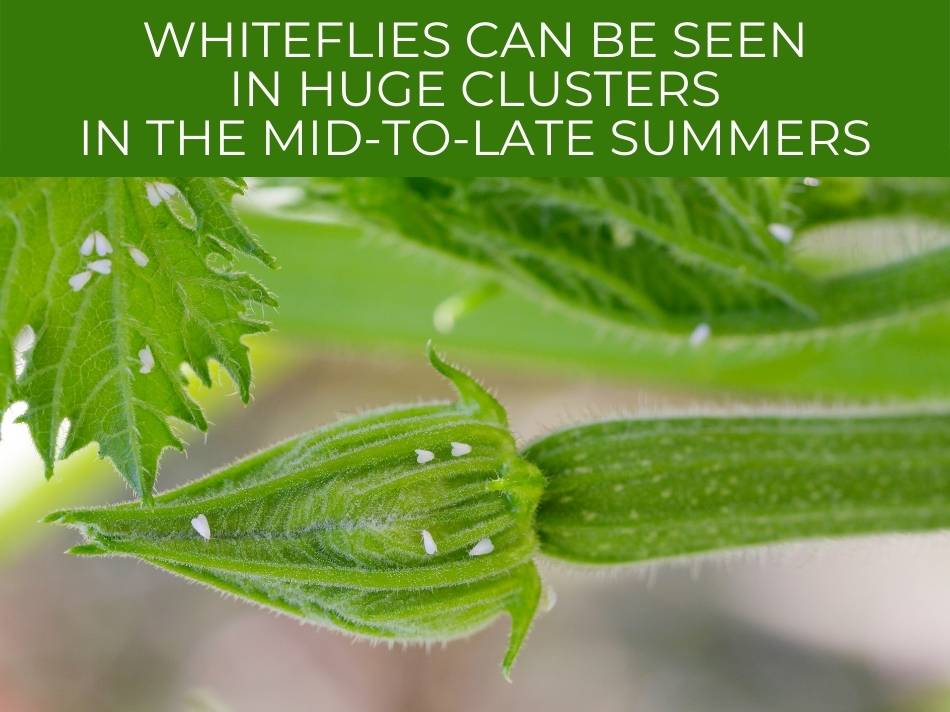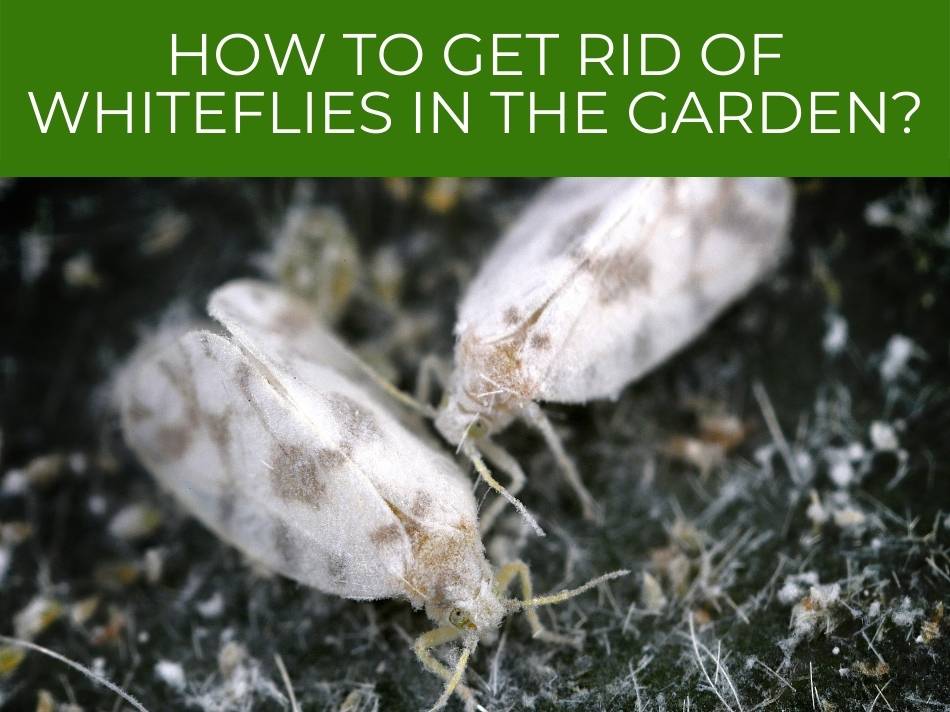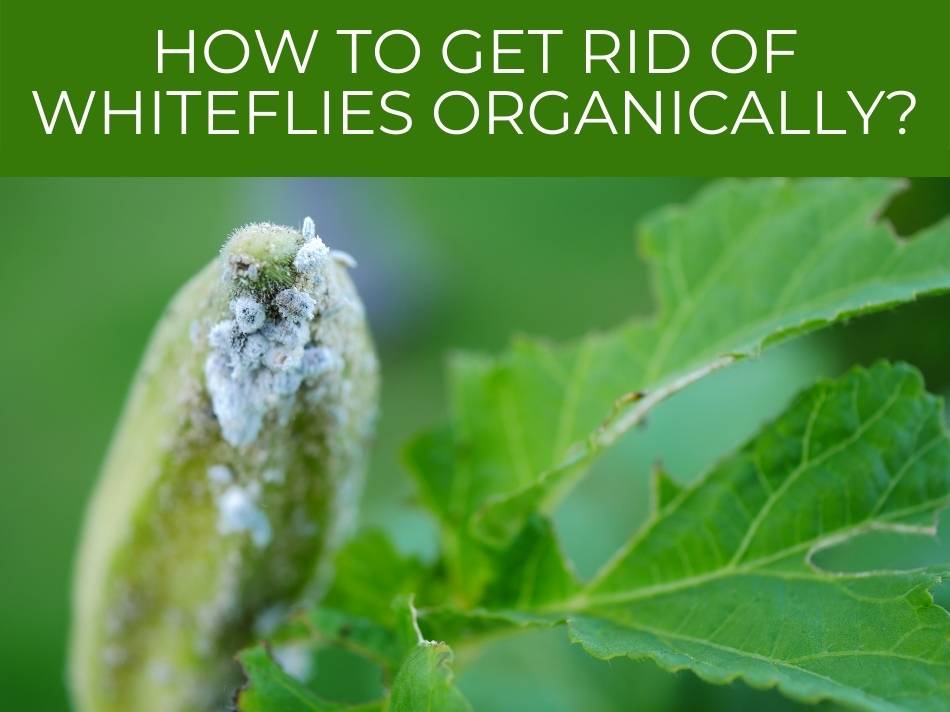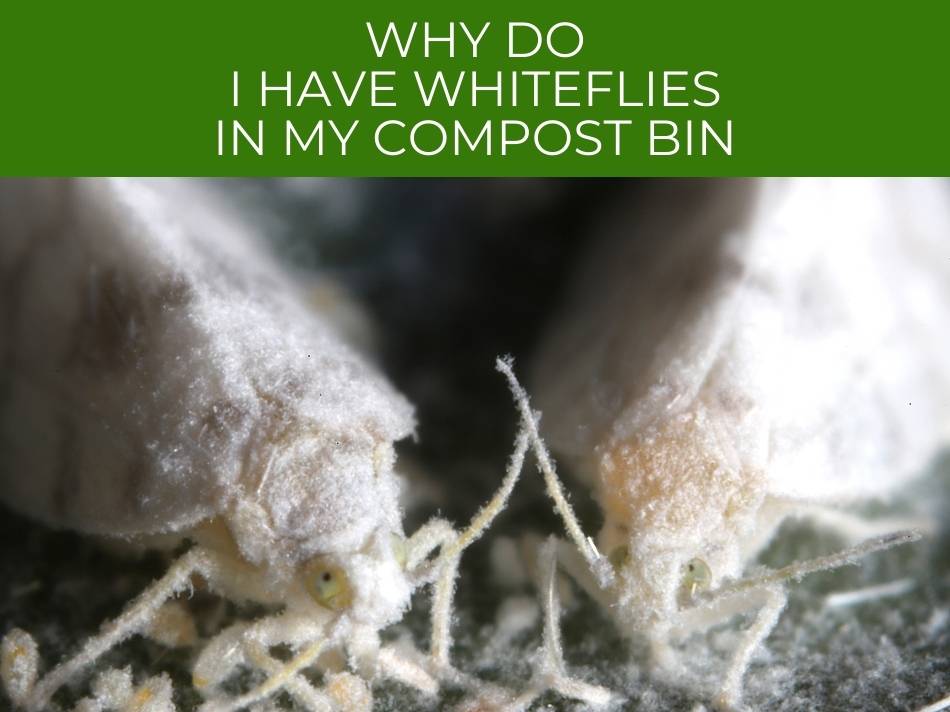Gardening is one of the most peaceful and productive activities, highly regarded and praised among plant lovers and gardening enthusiasts. Compost is an effective way to deal with kitchen & yard waste, but sometimes pests like whiteflies cause a problem in compost.
Whiteflies in a compost bin are typically caused by having fresh vegetation in the compost, which whiteflies feed on. To fix the problem, make sure to dry green matter before adding to compost, & covering it with soil or compost.
Whiteflies can be annoying and troublesome–and can spread to your garden & houseplants. However, dealing with whiteflies in a compost bin is fairly simple, and will prevent whitefly infestations on your plants.

Why do I have whiteflies in my compost bin?
The appearance of whiteflies in the compost pile is unlikely since they are plant feeders.
The dead and decomposing organic matter in the compost pile is not a preferred choice of nourishment, and neither is a suitable environment to lay eggs for the whiteflies.
Whiteflies in a compost bin are typically caused by the content of the compost. Whiteflies prefer fresh, growing parts of plants where they can extract plant juices. To prevent whiteflies, cover vegetation with compost or soil, & let green matter dry before adding to the pile.
Either you put something in the pile that the whiteflies are attracted to, or you added some whitefly infested organic matter in the bin.
The central portion of homemade compost is kitchen waste and garden waste, which includes —peals, leaves, and organic waste from all sorts of vegetables, fruits, and plants.
There are several ornamentals, vegetables, and fruit plants that are susceptible to being hosts for whiteflies.
These plants may include— okra, peppers, tomatoes, eggplants, sweet potatoes, citrus family trees, and cabbage family plants.
The addition of whitefly-infested organic matter or the susceptible host plant remains to the compost can lead to whitefly infestation in the compost pile.
This further results in the formation of big white clouds of whiteflies swarming the compost mix.
See our complete guide on how to make compost.

What are all the tiny white flying bugs?
The most common type of white flying bugs in gardens & houseplants is whiteflies. Contrary to its name, whiteflies are not true flies, but are true bugs ((Hemiptera & Homoptera); most are 1-2 mm long. Plants can be treated with neem oil, dish soap, or insecticide to get rid of whiteflies.
Whiteflies are exclusive sap-suckers that are closely related to Aphids and Mealybugs and structurally resemble a tiny moth.
The usual size range of whiteflies is 1-2mm and is covered with an opaque white powdery substance, which gives off a cottony appearance.
Whiteflies are pests that survive by sucking the plant sap and damaging the plant’s health by producing a byproduct known as honeydew.
Honeydew is a sticky substance that gives rise to fungal diseases like sooty mold, which shows up on the leaves and attracts ants to the plant.
Continuous whiteflies’ activity and feeding on the plant’s surface results in stunted growth, weak and wilted structure, yellowing and falling off of leaves, and eventually death of the plant.
The most troublesome whitefly species are:
- Greenhouse Whitefly
- Bandedwinged Whitefly
- Giant Whitefly
- Silverleaf Whitefly

Whitefly preferred habitat & life cycle
Whiteflies thrive in a warm and humid atmosphere and cannot survive cold weather.

Whiteflies can be seen in huge clusters in the mid-to-late summers when the conditions are more suitable for procreation.
They prefer to feed on growing parts of plants and are usually seen on the underside of new leaves.
Adult female whitefly lays about 400 eggs in its 3-week life cycle.
The eggs are laid in a circular pattern around the leaf’s veins that incubate for a period of 6 to 10 days.
The freshly laid eggs are yellow, and the mature ones (on the verge of hatching) are brown.
Once the eggs hatch, the larvae immediately start feeding on the leaves and grow a lot quickly.
They appear to be white ovals without legs, and they can’t move.
The whitefly larvae go through a series of metamorphic changes—where they develop into three nymph stages and a pupa before they fully form as adult whitefly.
How to get rid of whitefly in the compost heap?
The emergence of numerous clouds of whiteflies in your compost bin can be a nuisance and an off-putting scenario.
Whiteflies can be controlled & eradicated by:
- Checking the compost & removing any organic matter that the whiteflies can feed on and lay eggs.
- Placing fly traps inside the lid of the bin.
- Keeping the compost pile covered, & adding a little soil, sawdust, or spent compost to the heap.

How to get rid of whiteflies in the garden?
Whiteflies can be introduced in your garden by bringing infested plants into the indoor environment or planting infected plants in the outdoor garden.
To get rid of whiteflies in the garden, spray plants with neem oil, a diluted solution of dish soap (1-5% dish soap mixed with water), or insecticide. Other methods to get rid of whiteflies include: using aromatic plants to repel whiteflies, & vacuuming whiteflies off plants.
Whiteflies thrive in both indoor and outdoor regions with warm and humid climates; however, their activity is limited in cold weather.
Whiteflies are pests that dwell on the underside of the leaves of the infected plants where it carries out its life cycle processes and multiplies in number.
They are a hazard to the plants as they affect the overall health and life of the plant.
They feed on the plant sap and produce a fungal disease-causing substance known as–honeydew.
Excessive whitefly feeding results in stunted growth, weakening of the plant, wilting and decaying of leaves, and damage to the photosynthesis mechanism.
To prevent your beloved plants from destruction by whiteflies, it’s imperative to take action and install procedures to eradicate and restrict their development any further.

How to prevent whiteflies in the garden:
- Thoroughly inspect any new plant before buying it, and avoid adding it to your garden unless you are sure it is not infected with whiteflies or any other diseases.
- Avoid insecticides as whiteflies are resistant to them, and insecticides will kill beneficial insects that prey on whiteflies and other pests, and help in the process of pollination.
- Build an ecosystem where natural predators like spiders, ladybugs, green lacewing larvae, dragonflies, and hummingbirds can survive and control the whitefly population from flourishing.
- Create sticky traps by applying a mixture of petroleum jelly and dishwashing soap to bright yellow colored index cards. The whiteflies mistake the index cards for new leaves or foliage and get stuck to them.

How to get rid of whiteflies organically?
There are various organic methods to prevent and treat whitefly infestation on the house plants.
Some of the most effective methods you can implement to get rid of whiteflies are mentioned below.
The most common ways to get rid of whiteflies organically are: neem oil, dish soap & water spray, using other plants to repel whiteflies (e.g., aromatic plants like mint & onion), or even a vacuum to remove whiteflies from plants.

Method for getting rid of whiteflies organically
Use these procedures every few days until you eradicate the whitefly population.
- Separate the infested plants from the healthy ones and spare or hose them with your water can. Thoroughly blast the flies and plants with water. This will scatter the adult flies and dislodge eggs and larvae.
- Spray the underside of the leaves with insecticides to prevent the growth of new larvae. Use the insecticides in the evening hours to avoid harming any beneficial insects in the process.
- You can also use homemade solutions or neem oil or soap spray to stop the growth of the whitefly population. To prepare a soap spray, add eight drops of soap to 1L of warm water. Other than that, you can prepare neem oil spray by adding neem oil in 1L water, or you can also use a mixture of equal parts of vinegar and water.
- Another alternative solution is mixing one teaspoon of neem oil and one teaspoon of dishwashing soap to 1L of water. Remember to test the concentration for leaf burning on a single leaf and then dilute the solution as required.
- Place natural repellent plants with whitefly-infested plants to naturally repel the whitefly population. Strong aromatic plants like parsley, mint, onion, cilantro are highly effective at repelling whiteflies. Other plants that can be used as natural repellents are pineapple sage, nasturtiums, hummingbird bush, bee balm, and zinnias.
- If none of the above methods provide the desired results, and the whiteflies population still prevails, you can use a handheld vacuum to scrape the whitefly larvae and nymphs from the underside of the leaves. Be careful and thorough while doing this to avoid harming the plant. In addition to that, ensure you don’t empty your vacuum cleaner in the house trash, or else all the hard work would be for nothing.

How to get rid of greenfly and whitefly?
Greenfly is just the common name for a close relative of whiteflies and havoc-causing species of insects known as Aphids.
They are infectious pests that feed on the plant sap and harm the health of the plant.
Aphids are attracted to all sorts of plants and thrive by sucking the plant juice.
They are 1-3mm long and have a teardrop-shaped structure, six appendages, and may or may not possess wings.
Similar to the whiteflies, greenflies also produce honeydew which causes a fungal disease known as the sooty mold in plants.
The mechanism and procedure to eradicate Greenflies and Whiteflies from the house plants are the same.
You can refer to the above sections to review the methods to eliminate these unwanted and harmful pests.
See how to get rid of aphids naturally.

Conclusion
The most nerve-wracking problem a gardener faces is dealing with various pests and predators that infect the compost and harm the plants in different ways and make them susceptible to damage and diseases.
One such notorious pest is whiteflies that swarm the compost pile and affect the health and productivity of plants.
There are several ways to prevent and treat the whitefly infestation, and in this article, we have addressed most of them.
We hope this article provides you with all the information you were looking for and happy gardening to you and your plants.

